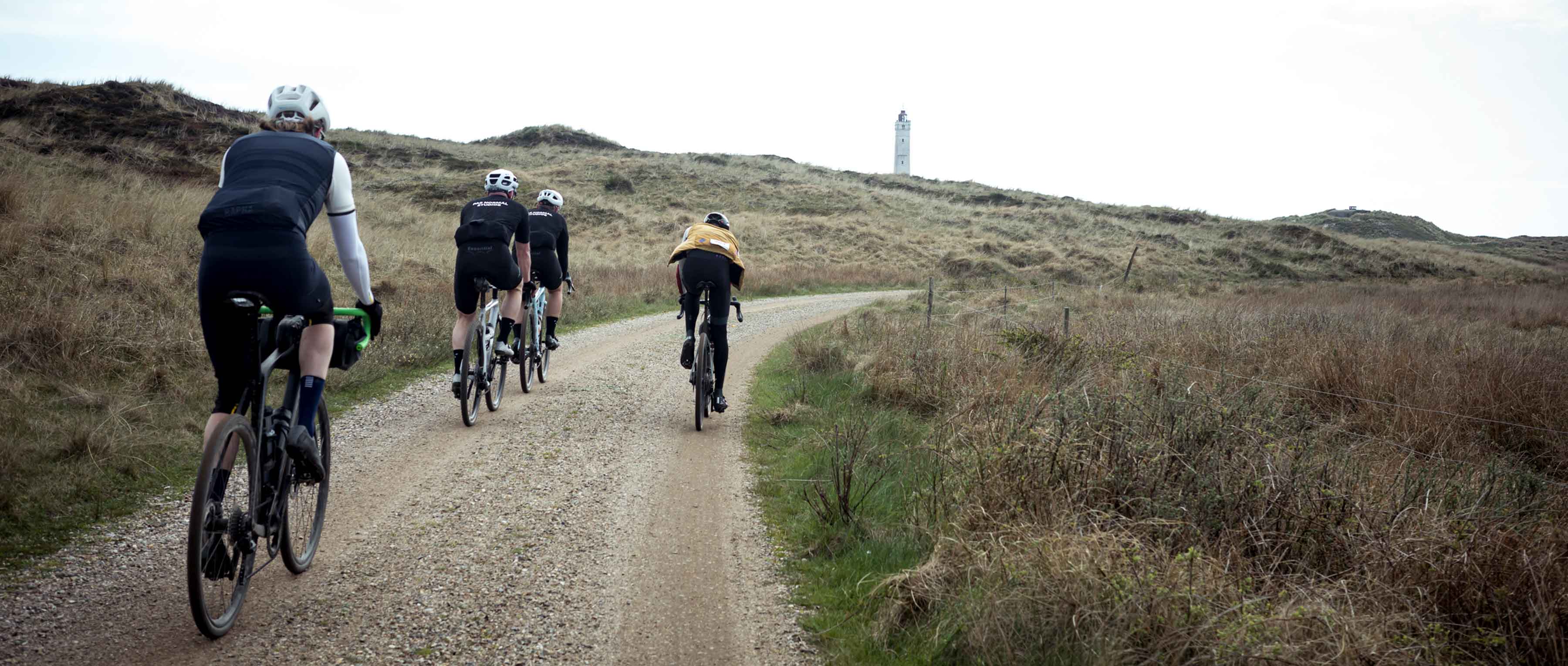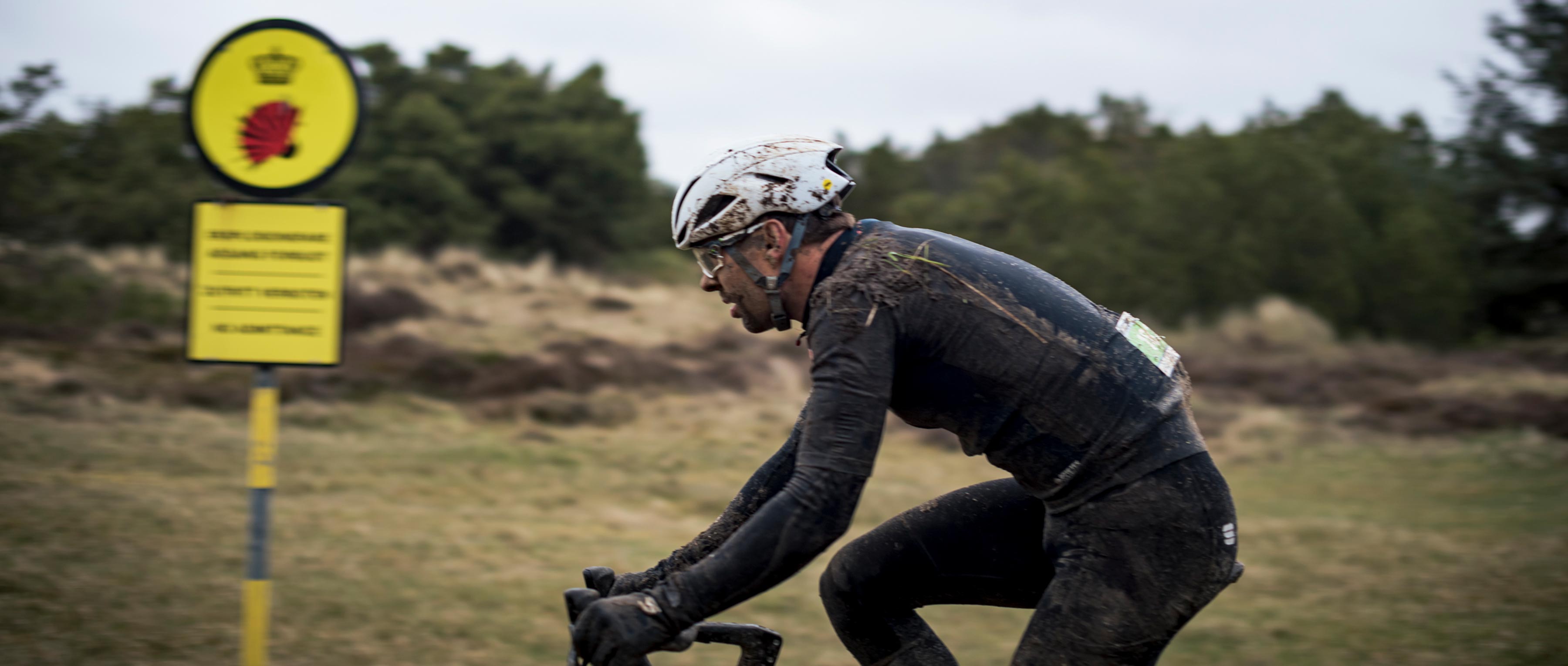Brutal weather, deep sand and off-limits military training areas. The west coast of Denmark might not sound like gravel riding heaven, but it was the location for Round 4 of the 2023 UCI Gravel World Series. Emmie Collinge volunteered to join the startline, but it sounds a lot like Type 3 fun to us.

I blow on my hands again, the cold already seeping deep into my body. There are five minutes until go time and even here, tucked deep in the start pen, there is little respite from the biting wind. Around me, the other riders do not appear to have read the memo: high winds, driving rain and 3 degrees Celsius were not what I was expecting for a UCI Gravel World Series qualifying race at the start of May. But this is the Western Danish coast, where the vastness of the North Sea, which is crashing onto the shore just metres from here, is proof that winter is still a thing this far north. Hopeful that warmth will come once the gun goes, I try to find the stoke, but deep inside I know that the 2023 Gravel Challenge Blåvandshuk will be one of the most testing events of the season.
Jutting out of the west Danish coast, the area around Blåvandshuk is somewhere that knows what it means to be battered. And on this day, it wants to dish out the same sensation to 600-plus gravel riders. Millenia of weather has hit this area hard, with winds and storms driving in from the North Sea shaping how the trees grow. Stoic and slightly slanted, the low-lying dunes don’t give much protection. But meteorological patterns aside, this area has seen humans try to batter it too. During the Second World War, it was the top line of the Nazi regime’s Atlantic defences, where remnants of huge concrete structures can still be seen today. In more recent times, this area has become a large military training zone for the Danish military, ever reliant on NATO. As part of the race, we’d be riding some otherwise-forbidden stretches of dirt through one of the rawest, most thought-provoking landscapes I’ve ever seen.
A scattering of human habitations (mainly cute holiday cabins with thatched roofs tucked in the dunes), sandy beaches, tufts of grass and some of the most pristine, yet "interestingly challenging" gravel roads make up the region. Had we been lucky enough to have had a window of good weather, the fine bright white sand hinted to Blåvand being a very special place. But as you may have guessed, that was not to be. The rain was relentless, aiding the splintered self-destruction of many of the groups in the race. The fine nature of the sand on the beach and in the dunes found its way into our eyes, mouths and complex bike components. Nothing sounded good. All this added to the wearing-down process that would lead to more than a third of the field dropping out of the race.

Off the beach and back onto the gravel. Think deep, fine pebbles and you’re somewhere close. With such ferocious winds, it required an effort close to riding in deep mud, which further added to the challenge of what had originally stood out as being the flattest race in the UCI Gravel World Series.
Compared to the previous day’s recon ride, in which the winds had been so fierce I’d battled to stay upright for most of the loop, race day rolled around with a slight drop in wind and an increase in rain. Slinging in pre-race coffee and listening to upbeat music on repeat, I tried to muster some extra energy as my gaze was fixated out the window, my heart sinking at the realisation that sensibly packing light for this trip from my base in Northern Italy had been a grave mistake. Why hadn’t I brought extra gloves or heavy-duty winter clothing? Sitting in the magic wet and windy window of 2–5 degrees, it was the definition of bike riding’s bad weather sweet spot.
The initial race gun adrenaline hit never really came on the day – it must have been numbed by the cold weather – so I didn’t regret my decision to start the race in a rain jacket despite well-intentioned advice from a teammate that it would cost me 30 watts.
Now, I don’t want this article to turn into an essay of excuses and weather bashing. Gravel racing takes place in the elements, meaning that if you sign up to an event, you should be prepared in a psychological and equipment sense. But there are also moments when challenges of events and weather can be so large that you wonder what in your right mind made you want to sign up for them. Unfortunately, Gravel Challenge Blåvandshuk was one of those events.

Head down, fighting to hold the wheels that seemed to endlessly pass me, I was completely oblivious to the beauty of the area I was riding through. No time to admire the rolling dunes or the contrast of light yellows and greens that make up this area. I didn’t wonder at the angles that the taller bushes had grown at, but cursed out the wind that had caused it and felt like it wanted to do the same to me. The thrill of racing over the pristine white sands of the beach were consumed by the raw pain in my hands and feet from the cold, driving rain. If a reason that many of us race gravel was to be in the moment, then this race had tied me firmly in the now, my whole body and mind being consumed with the cold, which was making the riding harder than I could imagine.

I dropped out at 110 km, two laps done out of the three laps in the 155 km race. It was probably one of the hardest decisions of my gravel racing career. The pain of not finishing was amplified by the pain of the cold and fatigue that washed over me as I was wrapped in a blanket by race organisers, a steaming cup of coffee pressed generously into my hands.
When you have the likes of Spring Classics specialists from the Soudal Quik-Step’s Wolf Pack pushing the pace at the front of the men’s race, you understand the territory you’ve embarked into. I took some solace in the fact that I wasn’t the only one to have been forced off the bike by the relentlessness of the rain and wind. No wonder this is where the Danish military sends its soldiers to test their mettle.
Every rider of the Gravel Challenge Blåvandshuk stepped up with a like-minded prospect of being challenged to their limits. Some thrived, many failed, but whatever the outcome, the battle stories will last a long time and have already made Gravel Challenge Blåvandshuk a standout event in the UCI gravel calendar.
I came away consoled by the fact that even though gravel racing – in the UCI sense, at least – is leaning more and more into a ruthless will to win – its roots are not forgotten. Ingrained into this discipline is a deep appreciation for the outdoors and each other. You know when I learned this most? Because the same man who hugged the hysterical me at the finish was the same man I bumped into at the gourmet feed station during the next day’s Gourmet Gravel 110km event. Recognising my bike and helmet, he tapped me on the shoulder, asking if I was feeling better and had I tried the cakes yet. It turned out he had loved every minute of the previous day’s bike race.
And he wasn’t the only one to enjoy it, which makes me glad because this region deserves to be enjoyed on a gravel bike - it’s one of the best places I’ve ever ridden. Just next time I’ll make sure I’ve got a flexible travel window to make the most of the weather.